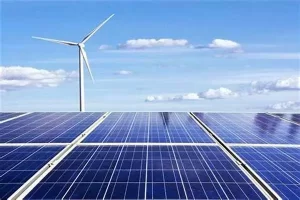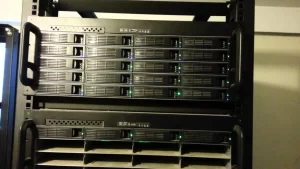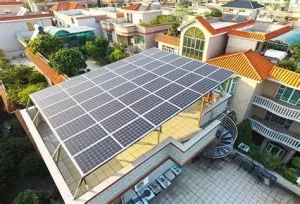Harnessing Renewable Energy: A Comprehensive Guide to Hybrid Solar and Wind Systems
As the demand for sustainable and reliable energy solutions grows, hybrid solar and wind systems have emerged as an effective way to harness renewable energy. By combining the strengths of both solar and wind power, these systems can provide a more consistent and reliable energy supply. This guide will explore the components, benefits, and installation process of hybrid solar and wind systems.

Understanding Hybrid Solar and Wind Systems
A hybrid solar and wind system integrates solar panels and wind turbines to generate electricity. This combination takes advantage of both sunny and windy conditions, ensuring energy production even when one source is less available. The main components of a hybrid system include:
- Solar Panels: Convert sunlight into electricity.
- Wind Turbines: Convert wind energy into electricity.
- Charge Controller: Regulates the power going to the batteries to prevent overcharging.
- Batteries: Store the generated electricity for later use.
- Inverter: Converts stored DC power from the batteries into AC power for household use.
- Hybrid Controller: Manages the input from both solar panels and wind turbines to optimize energy production and storage.
Benefits of Hybrid Solar and Wind Systems
- Increased Reliability: Combining two renewable energy sources ensures a more stable energy supply, especially in regions with variable weather conditions.
- Enhanced Efficiency: The system can continue to produce power during both day and night, maximizing energy capture throughout the year.
- Cost Savings: Over time, hybrid systems can reduce energy bills and provide a return on investment through savings on electricity costs.
- Environmental Impact: Reduces reliance on fossil fuels, decreasing greenhouse gas emissions and contributing to a cleaner environment.
Installation Process
1. Site Assessment
Before installation, conduct a thorough site assessment to determine the suitability of your location for both solar and wind energy. Consider factors such as:
- Solar Exposure: Ensure the site receives adequate sunlight throughout the day.
- Wind Speed: Measure average wind speeds to ensure they are sufficient for wind turbine operation.
- Space Availability: Confirm there is enough space to install both solar panels and wind turbines without obstructions.
2. System Design
Design the system based on your energy needs and site conditions. This includes selecting the appropriate size and type of solar panels, wind turbines, and other components. Work with a professional to ensure the system is tailored to your specific requirements.
3. Obtain Permits
Check local regulations and obtain any necessary permits for the installation of solar panels and wind turbines. Compliance with building codes and zoning laws is essential to avoid legal issues.
4. Install Solar Panels
- Mounting: Install the solar panel mounting system on the roof or ground.
- Panel Installation: Secure the solar panels to the mounting system, ensuring they are angled correctly for maximum sunlight exposure.
- Wiring: Connect the solar panels to the charge controller and batteries.
5. Install Wind Turbine
- Foundation: Prepare a solid foundation for the wind turbine tower.
- Tower Installation: Erect the tower and secure the wind turbine at the top.
- Wiring: Connect the wind turbine to the charge controller and batteries.
6. Connect the System
- Charge Controller: Install the hybrid charge controller to manage the inputs from both the solar panels and wind turbine.
- Inverter: Connect the inverter to the battery bank and the main electrical panel to convert DC to AC power for household use.
- Testing: Thoroughly test the entire system to ensure all components are functioning correctly and efficiently.
Maintenance Tips
- Regular Inspections: Periodically inspect solar panels and wind turbines for any damage or debris.
- Battery Maintenance: Check battery levels and perform necessary maintenance to ensure optimal performance.
- Cleaning: Keep solar panels clean and free from obstructions to maintain efficiency.
- Professional Servicing: Schedule regular maintenance with a professional to address any potential issues and ensure the system operates smoothly.
Conclusion
Hybrid solar and wind systems offer a robust and sustainable solution for energy needs, leveraging the strengths of both renewable sources. By following the installation process and maintaining the system properly, you can enjoy a reliable, efficient, and environmentally friendly energy supply for years to come.
Contact us
- Email:[email protected]
- Tel: +86 13651638099
- Address: 333 Fengcun Road, Fengxian District, Shanghai
Get A Quote Now!

Read more

Unveiling Photovoltaic+Energy Storage: Four Major Application Scenarios Leading the Future of Energy
In this way, the energy landscape is evolving, and one of the most thrilling developments in renewables is the integration of photovoltaics energy storage.

From Theory to Practice: Four Methods for Estimating Photovoltaic Power Generation
Photovoltaic power generation has become an essential part of modern energy solutions, particularly in home solar systems and distributed power applications

Rack-Mounted Lithium Iron Batteries: Creating Efficient and Reliable Energy Storage Solutions
When it comes to modern energy solutions, rack-mounted lithium iron batteries are taking center stage in a variety of industries. Whether you’re powering data centers, stabilizing energy for households, or keeping critical systems online at 5G base stations, these batteries have become the unsung heroes of our electrified world.

Late Night Energy Saving Tips: How to Maximize Electricity Savings During Off-Peak Hours
With rising energy costs, homeowners are increasingly exploring innovative ways to save on their electricity bills. One effective approach is utilizing off-peak hours—times when electricity rates are significantly lower due to reduced demand.
